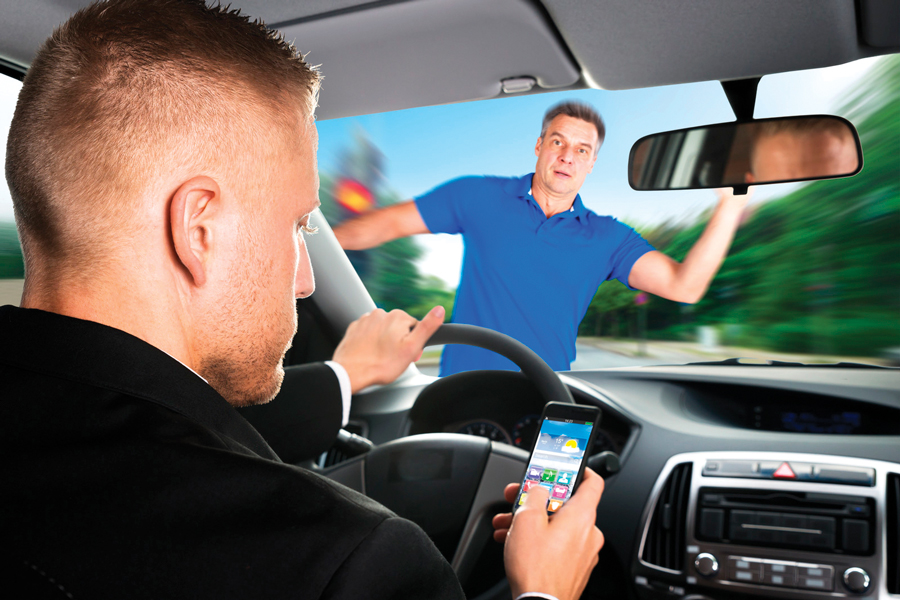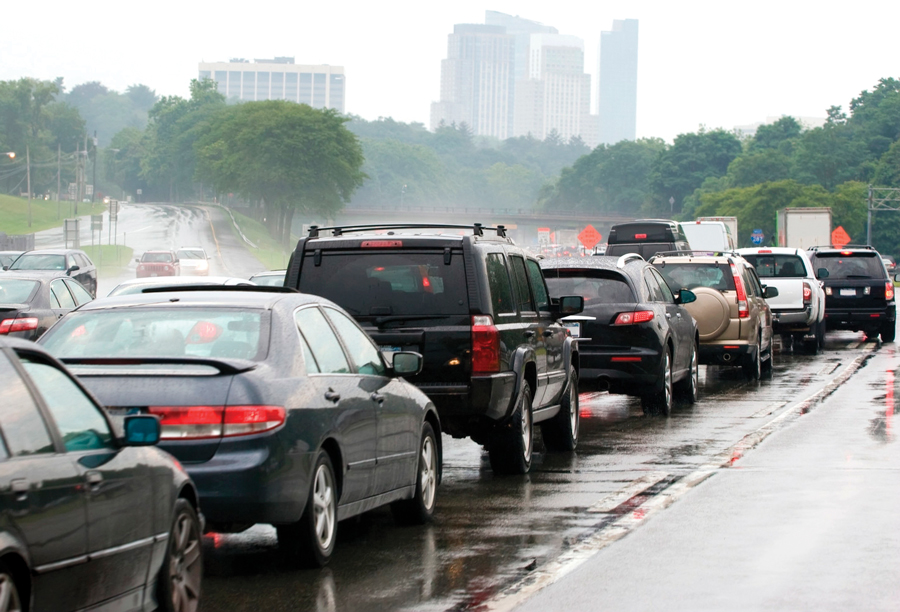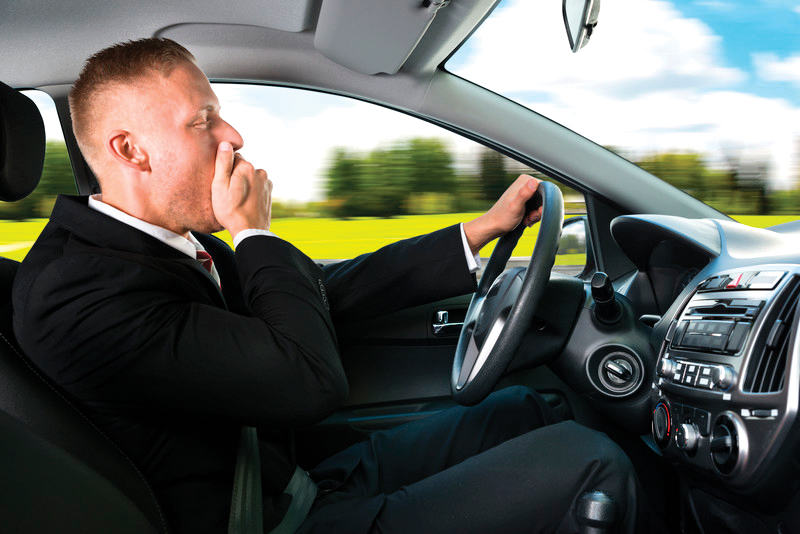BY BOB CRESCENZO
 Your professional drivers should be trained to handle the majority of driving situations better than the average motorist. What no driver can control, however, are the bad driving habits and inattention of other drivers.
Your professional drivers should be trained to handle the majority of driving situations better than the average motorist. What no driver can control, however, are the bad driving habits and inattention of other drivers.
A study conducted by the National Highway Traffic Safety Administration (NHTSA) and the Virginia Tech Transportation Institute estimates that almost 80 percent of crashes and 65 percent of near-crashes happen within three seconds of some form of driver distraction. The study also estimates that 25 percent of all tow-away crashes are related to driver inattention. So, while your chauffeurs cannot control the poor decisions of other motorists, they can control how they react to them in order to avoid becoming a statistic.
Defining the Problem
Distracted driving is any nondriving activity a motorist engages in that has the potential to distract them from the primary task of driving and, consequently, increases the risk of a crash.
TYPES OF DISTRACTIONS
There are three major types of driving distractions:
Visual: something that takes your eyes off the road
Manual: something that takes your hands off the wheel
Cognitive: something that takes your mind off driving
However, there is another more subtle type of distraction that is very important when managing the complex requirements of driving. That condition is called “change blindness.” The easiest way to describe it is missing changes that are happening right in front of you.
When driving, we all must use focused attention, but sometimes we may have limited resources to manage that attention. Combining expectations and past experiences about driving sometimes causes us to “miss the cues.” We proceed based on our expectations, and we don’t see things because we didn’t expect to see anything. As a result, we don’t react or, in some cases, we react from the expected experience. When the current situation is different from what we expect, driving errors may occur.
Common Distractions
The most common distractions facing today’s professional drivers are:
1. Physical condition
2. Mental/emotional condition
3. The vehicle’s condition
4. What’s happening inside the vehicle
5. What’s happening outside the vehicle
6. Driver-related behavior
 For instance, your chauffeurs can be distracted by conditions outside as well as inside their vehicles. Among the most common exterior distractions are other vehicles, rubber-necking, accidents, sun and oncoming headlight glare, debris on the road, seeking destination landmarks, pedestrians/bicyclists, and billboards.
For instance, your chauffeurs can be distracted by conditions outside as well as inside their vehicles. Among the most common exterior distractions are other vehicles, rubber-necking, accidents, sun and oncoming headlight glare, debris on the road, seeking destination landmarks, pedestrians/bicyclists, and billboards.
Interior distractions are as diverse as they are dangerous. The most obvious for all drivers are cell phone usage (even with hands-free devices), eating, drinking, and adjusting the radio, climate, or other vehicle controls. Less-recognized distractions include fatigue, talking to passengers, objects shifting in the vehicle or picking up an item that fell to the floor, daydreaming, and road rage.
Civilian motorists are frequently spotted driving while applying make-up, shaving, reading, disciplining children, smoking, and driving without shoes. The truth is that the poor driving habits of others have become a threat to every attentive driver on the road. Distraction management is about controlling a vehicle in a sea of other poorly trained, multi-tasking nonprofessional drivers.
Technology Is Driving Distraction Growth
The NHTSA study placed driver distraction as the fourth most serious driving safety issue, after drunken driving, aggressive driving, and speeding. With innovative technologies becoming standard upgrades in newer vehicles at a rapid pace, distracted drivers are becoming more of a hazard. Sophisticated entertainment centers, on-board navigation devices, internet connections, and email/text access have increased the time that drivers are distracted and they all pose a threat to roadway safety.
If your chauffeurs are distracted from the task at hand, even for a second, they are three times more likely to be involved in a crash than attentive drivers are. The problem will only intensify as distractions for drivers increase with the introduction of larger chauffeured vehicles and more onboard “conveniences.”
 Focusing on the Road
Focusing on the Road
Clearly, a chauffeur’s ability to safety control a vehicle and remain attentive will continue to be tested as a result of the ever-increasing on-the-road distractions in our society. That’s why it’s more important than ever to educate your driving teams about the serious and potentially deadly dangers of distractions. Ultimately, the safe operation of your vehicles is the responsibility of your chauffeurs. Doing their part to decrease distractions while behind the wheel and follow defensive driving techniques will not only help them reach their destinations safely but also benefit all who share the nation’s roads.
What Can Your Chauffeurs Do?
While no one can control the actions of others, there are techniques that chauffeurs can use to help minimize the dangers those actions can cause.
To start, emphasize the importance of the following to your chauffeurs:
- Knowing their routes and addressing concerns about itinerary and passenger issues with dispatch as soon as possible
- Ensuring their vehicles are regularly and consistently inspected
- Getting adequate rest, as fatigue is a serious distraction
- Staying healthy and managing their health before and during a trip
- Slowing down and adding space in challenging driving conditions, including heavy traffic, inclement weather, and construction zones
- Signaling their driving intentions clearly and well in advance
- Being on the lookout for distracted drivers, pedestrians, and bicyclists, and giving them plenty of room since they may not be aware of vehicles around them, with an extra focus on:
- Watching for drivers who drifts out of their lanes, travel at inconsistent speeds, slow down or stop suddenly, and those who don’t seem to know where they are going;
- Anticipating drivers who are preoccupied with non-driving tasks like reading, eating, smoking, or talking on a cell phone;
- Exercising caution around drivers who appear to be distracted by a conversation with passengers or children in their vehicles;
- Anticipating the actions of elderly drivers, as they are statistically more likely to experience visual impairments, physical limitations, effects of medication, and a decreased response time; and
- Being on the lookout for distracted drivers, pedestrians, and bicyclists, and giving them plenty of room to account for their presumed unawareness of their surroundings
Minimizing their own distractions.
If a chauffeur’s full attention is on the road, they’ll be more likely to spot other motorists who may be distracted by their own activities. As chauffeured transportation companies continue to incorporate larger and more unwieldy vehicles like vans, mini-buses, and even motorcoaches into their fleets, it is incumbent upon management to make sure that their chauffeurs assigned to those vehicles are familiar with the specific equipment before they get on the road. Most importantly, these drivers must also understand that the bar is raised even higher when it comes to both understanding and avoiding distractions when a heavier passenger load is in their care. [CD0118]
Bob Crescenzo is the Vice President for Safety & Loss Control of Lancer Insurance Company in Long Beach, NY. He can be reached at bcrescenzo@lancerinsurance.com.

